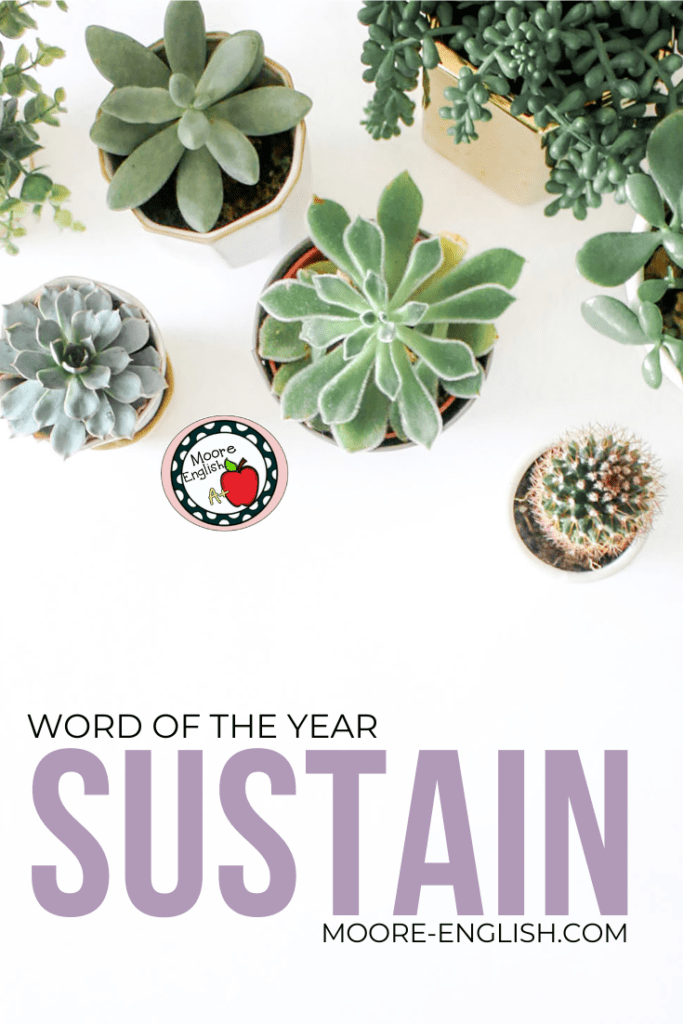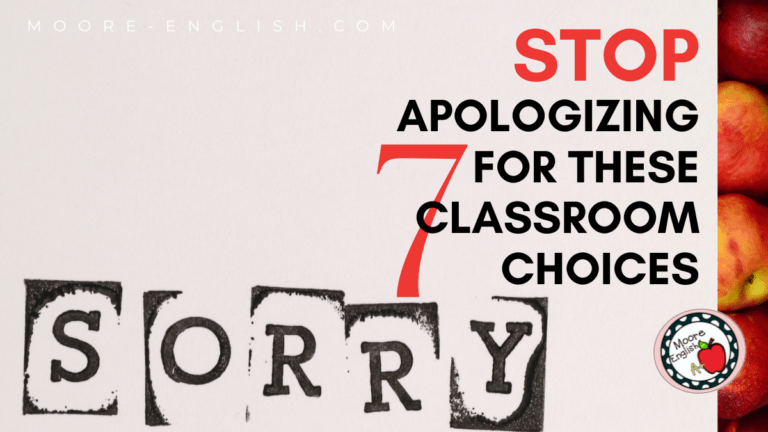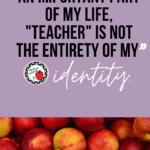“Sustainable” was my word of the year. When I chose this word in January, I never imagined how important sustainable teaching practices would be in 2020. Never did I expect that a focus on sustainable teaching would help me find balance in other parts of my life! Here’s what I learned this year, and I’ll also share my word for the upcoming year.
This post this post may contain affiliate links. Please read the Terms of Use.
Sustainable Teaching Basics
First and foremost, sustainable teaching relies on boundaries. For me, building a schedule is an important part of setting boundaries. I have a tendency toward perfectionism, so it is important that my schedule is livable and flexible–not rigid and unforgiving. In other words, a schedule should bring you peace, not cause stress. Here are some key components of my schedule:
- Prioritizing sleep. Somewhere along the line, I developed the misconception that exhaustion was a badge of honor. It’s not. Are there times when I can’t sleep? Yes. When I still feel tired? Yes, I’m looking at you parent-teacher conferences. But, on the whole, a schedule helps me to sleep better and with fewer interruptions.
- Making exercise accessible. Before the pandemic, I associated exercise with going to the gym, which is kind of an ordeal for me (get the clothes and shoes, get in the car, check in, find a locker, choose a playlist, don’t forget anything, come home, shower, do laundry). However, the pandemic made me an at-home exercise enthusiast (My favorites are free and come from Sydney Cummings on YouTube). Decoupling exercise from the gym has helped me tremendously.
- Similarly, my hydration has improved because I simply keep a water bottle within reach all the time. This water bottle is my absolute favorite. Never did I think I would feel so strongly about a water bottle. It’s also one of my 10 Teacher Gift Recommendations!
By making time and space for my own health, I am committing to sustainable teaching. Gone are my teacher-martyr days. Emphasizing these aspects of my life consistently reminds me that while teaching is an important part of my life, “teacher” is not the entirety of my identity.

Sustainable Teaching Practices
In the classroom, it’s also important for me to practice sustainable teaching. Most importantly, this means I try to arrive at school early so I can get some work done before my students arrive and then I can leave as soon as contract time ends. In addition, here are some other practices that have helped me focus on sustainable teaching:
- First and foremost, I have focused on “satisficing,” a term I first heard from Dave Stuart, Jr. He does a far better job defining satisficing than I can: “Satisficing is what we do when we accept an available option as satisfactory rather than working to find or obtain the optimal option.” For me, this philosophy has played out in my laundry approach to grading.
- Secondly, I have been letting technology do a lot of the heavy lifting. Because of the pandemic, I’m not comfortable bringing supplies and papers home from school. As a result, I’m grading less, which means I can focus more instruction time on metacognition and goal setting. Similarly, I have used technology to grade formatives, which is more efficient. Finally, I am grading writing 100% digitally, which has encouraged me to focus feedback.
Word of the Year
With all of this in mind, for the upcoming year, I am going to continue focusing on sustainable teaching. In order to remain a teacher, I have to commit to sustainable teaching as a lifestyle rather than as a tagline. For this reason, my word for the upcoming year is sustain. As an English teacher, the different between last year’s adjective “sustainable” and this year’s verb “sustain” is tremendous. In year one, I focused on identifying and naming the practices that create a sustainable life. In year two, I have to continue the practice; I have to do the work and sustain without becoming complacent. I hope you’ll join me in this journey!
















